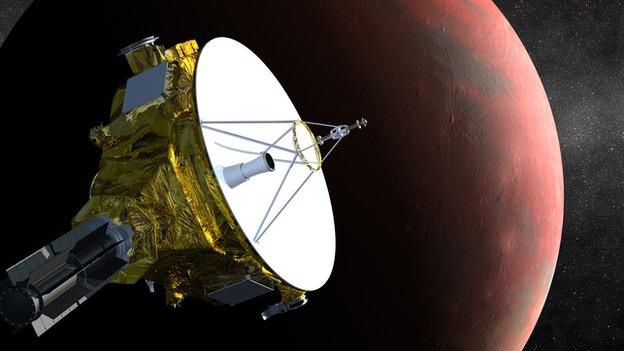New Horizons: Pluto's surface sharpens for Nasa probe
- Published

The image was taken on Thursday from a distance of 5.4 million km
As New Horizons bears down on Pluto, its images just get sharper and sharper.
The probe's latest picture released on Saturday has started to give scientists some real indications of the geology on the dwarf world.
The new black-and-white view reveals a vast band of patterned terrain stretching around the globe for roughly 1,500km.
Nasa's spacecraft is due to flyby the distant mini-planet on Tuesday.
When it does so, it will be just 12,500km above the surface.
At that point, its telescopic camera, Lorri, will be acquiring images at a resolution that is better than 100m per pixel.
But for the moment, features still have a rather blurred look about them.
This latest shot from Lorri was taken on Thursday when New Horizons, external was still 5.4 million km from its target.
At this distance, the resolution is 27km per pixel. Nonetheless, even at this range, there is plenty to excite the geologists.
Dr Marek Kukula: "Reclassification changes the way we think about our corner of the galaxy"
You can still see just below the patterned band the very dark terrain that scientists have dubbed "the whale". Not visible any more, however, is the very bright region that looked like a heart in earlier images. This has rotated out of view.
It will, though, come back around, and will be the face of the 2,300km-wide world that is presented to New Horizons at closest approach.
"Among the structures tentatively identified in this new image are what appear to be polygonal features; a complex band of terrain stretching east-northeast across the planet, approximately 1,000 miles long; and a complex region where bright terrains meet the dark terrains of the whale," said New Horizons principal investigator Alan Stern.
New Horizons was launched from Earth in 2006. It is set to gather hundreds of pictures and other types of research data as it sweeps past Pluto and its five moons: Charon, Styx, Nix, Kerberos and Hydra.
The probe's difficulty is getting all that information back to Earth. The distance to the dwarf is vast - more than 4.7 billion km - and this makes for very low bit rates.
The mission team expects it to take 16 months to return all the science from the flyby.
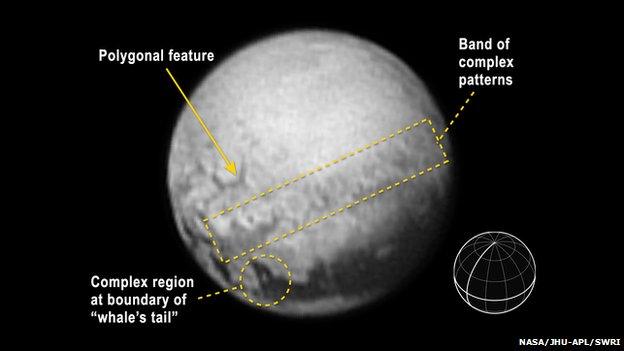

Charon, Pluto's biggest moon (L), pictured with the dwarf planet (R) on Wednesday
The BBC will be screening a special Sky At Night programme called Pluto Revealed on Monday 20 July, which will recap all the big moments from the New Horizons flyby.
Jonathan.Amos-INTERNET@bbc.co.uk, external and follow me on Twitter: @BBCAmos, external
- Published9 July 2015

- Published9 July 2015

- Published8 July 2015
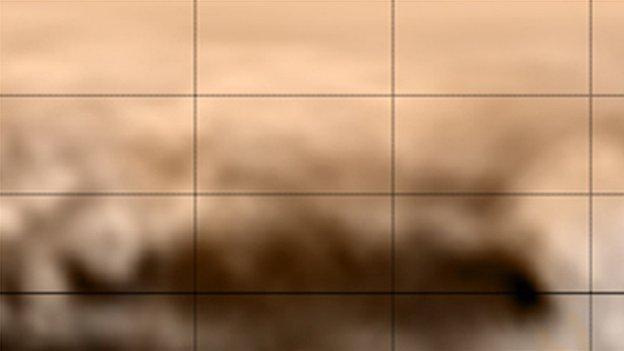
- Published6 July 2015
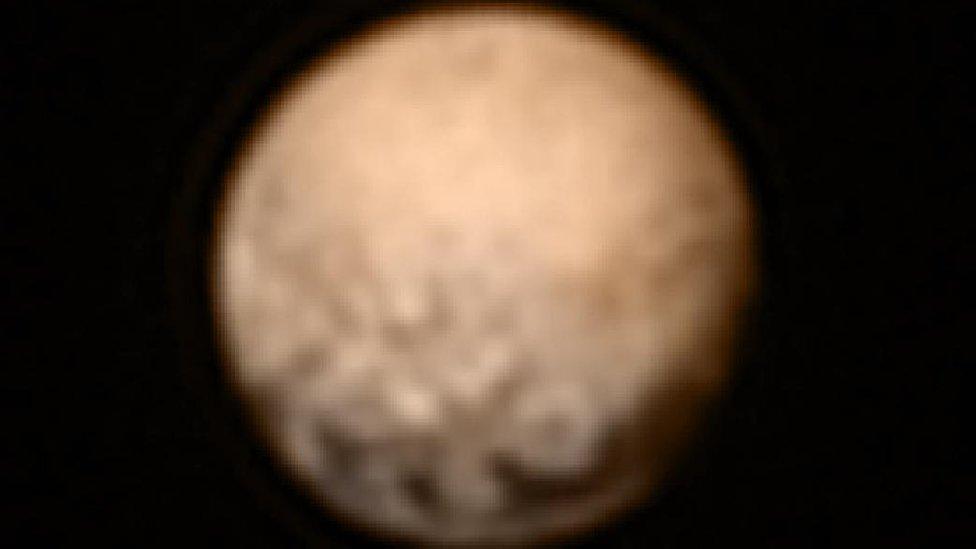
- Published2 July 2015
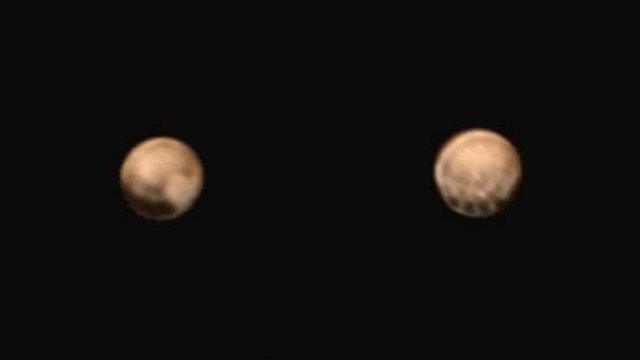
- Published1 July 2015
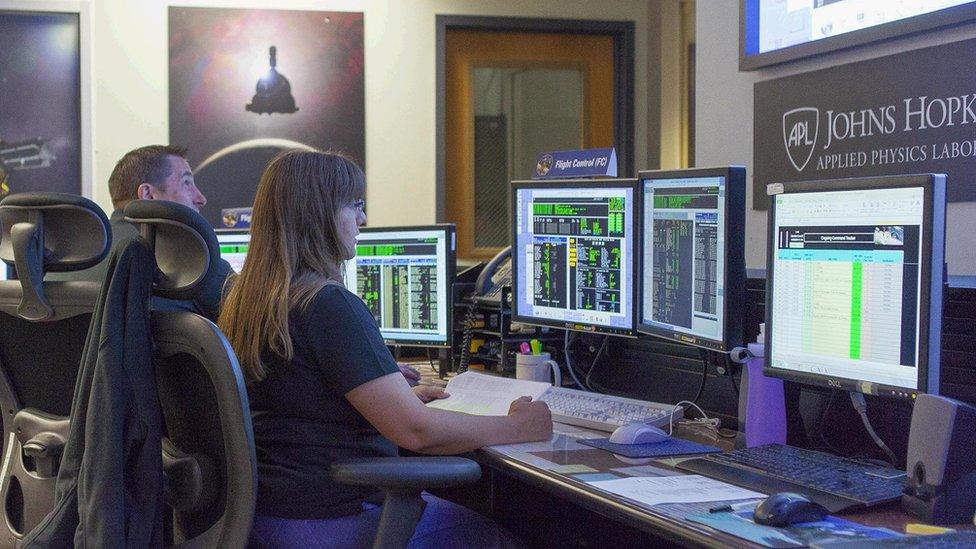
- Published12 June 2015
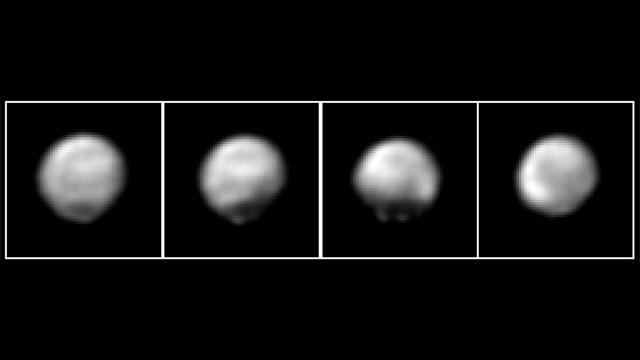
- Published4 June 2015
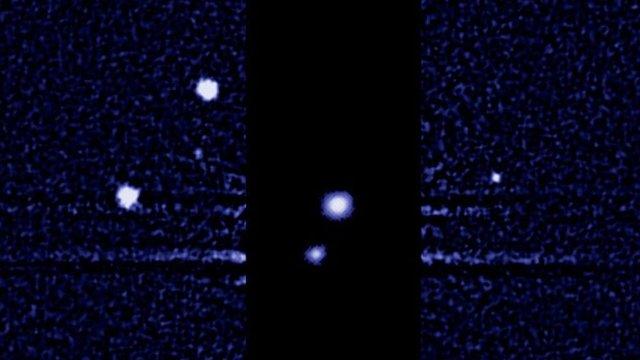
- Published13 May 2015
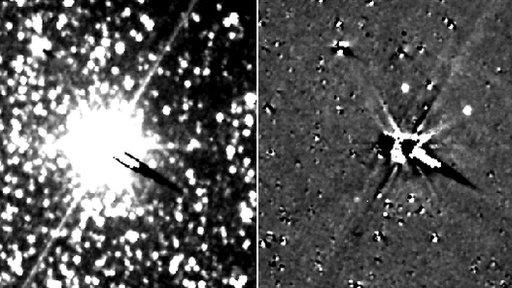
- Published30 April 2015

- Published15 April 2015
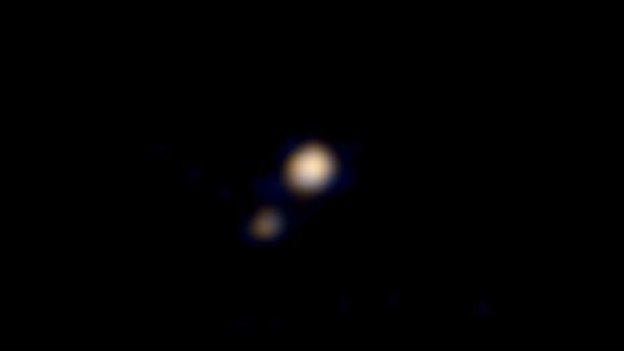
- Published5 February 2015
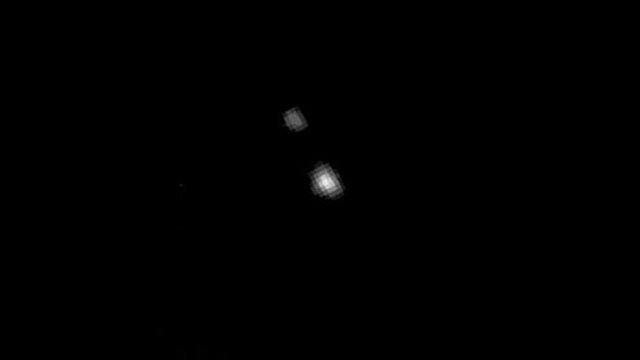
- Published25 January 2015
